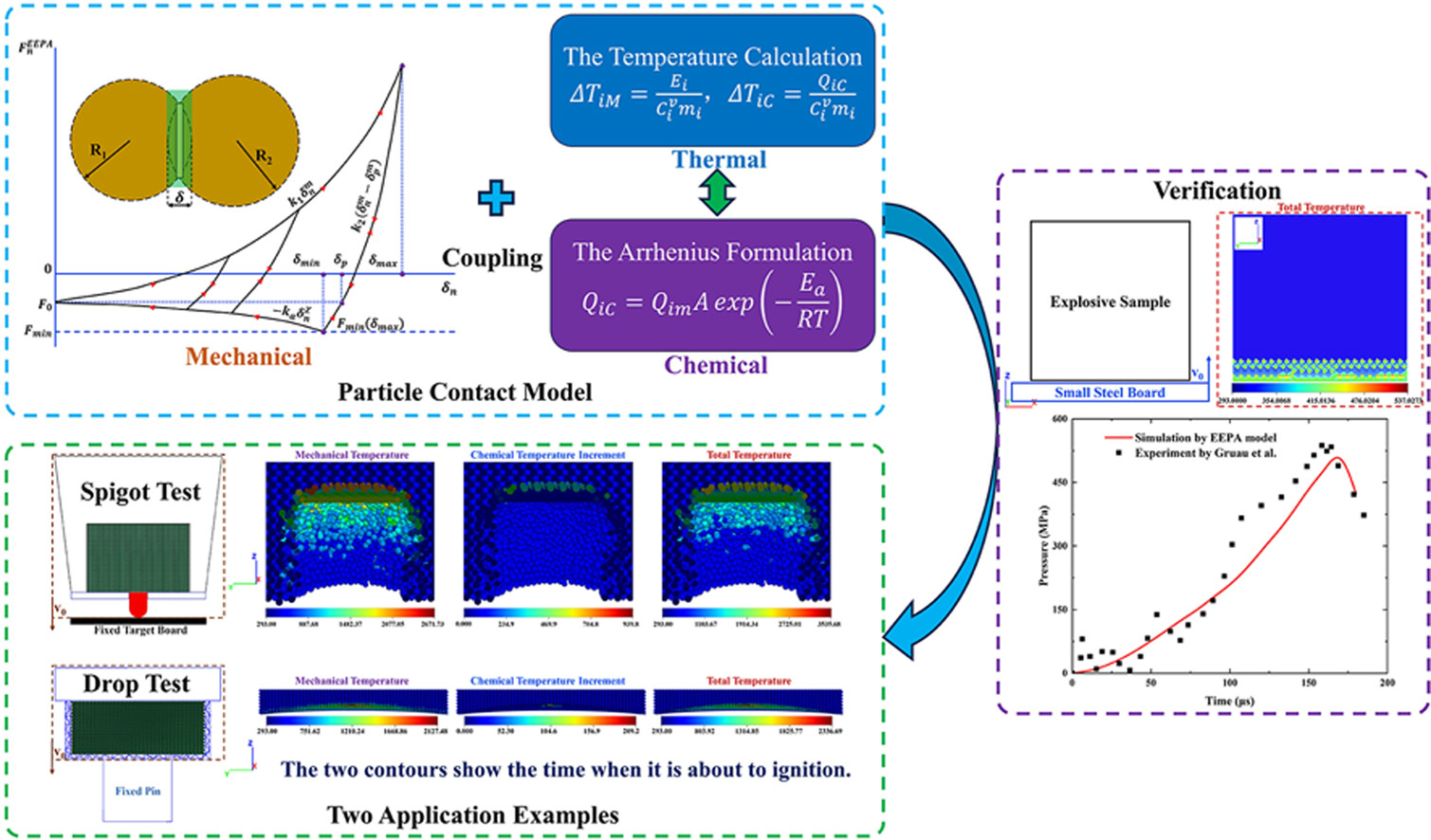• A mechanical-thermal-chemical coupled DEM model to simulate explosives ignition.
• Verified by cubic sample and Steven Test, followed by Spigot Test and Drop Test.
• Results of simulations mirror both the literature and actual experiments.
• Key ignition mechanism: strain energy accumulation and damping energy dissipation.
Polymer-bonded explosives (PBXs) are widely used in military applications due to their high energy density, but their safety under impact loading remains a critical concern due to hotspot-induced ignition risks. While existing experimental and continuum methods face limitations in capturing sub-millisecond mesoscale processes and discontinuous damage evolution, this study develops an integrated Discrete Element Method (DEM) framework integrating the Edinburgh Elasto-Plastic-Adhesive (EEPA) contact model with Arrhenius reaction kinetics, where mechanical energy dissipation deterministically drives thermal-chemical ignition. The framework successfully predicts hotspot generation and ignition thresholds in cyclotetramethylene tetranitramine (HMX) particle explosives under impact loading. The maximum temperatures of the cubic sample are consistent with the literature and the verification analysis of a Steven Test is aligned with an experiment in literature. Application to Spigot and Drop Tests reveals strain energy accumulation and damping dissipation as dominant ignition mechanisms, with chemical activation showing exponential dependence on mechanical heating. Compared to existing DEM studies focusing on single-physics processes, this work establishes a more comprehensive and better predictive tool for mapping mechanical loading conditions to ignition thresholds.

